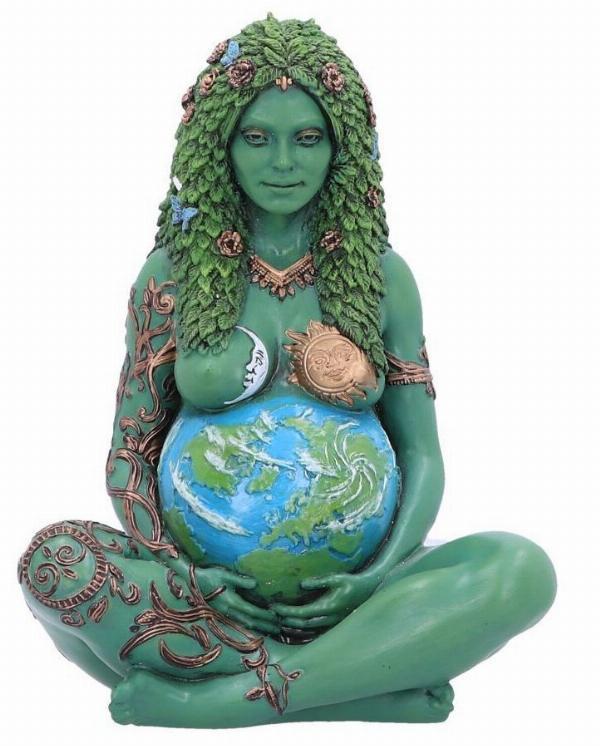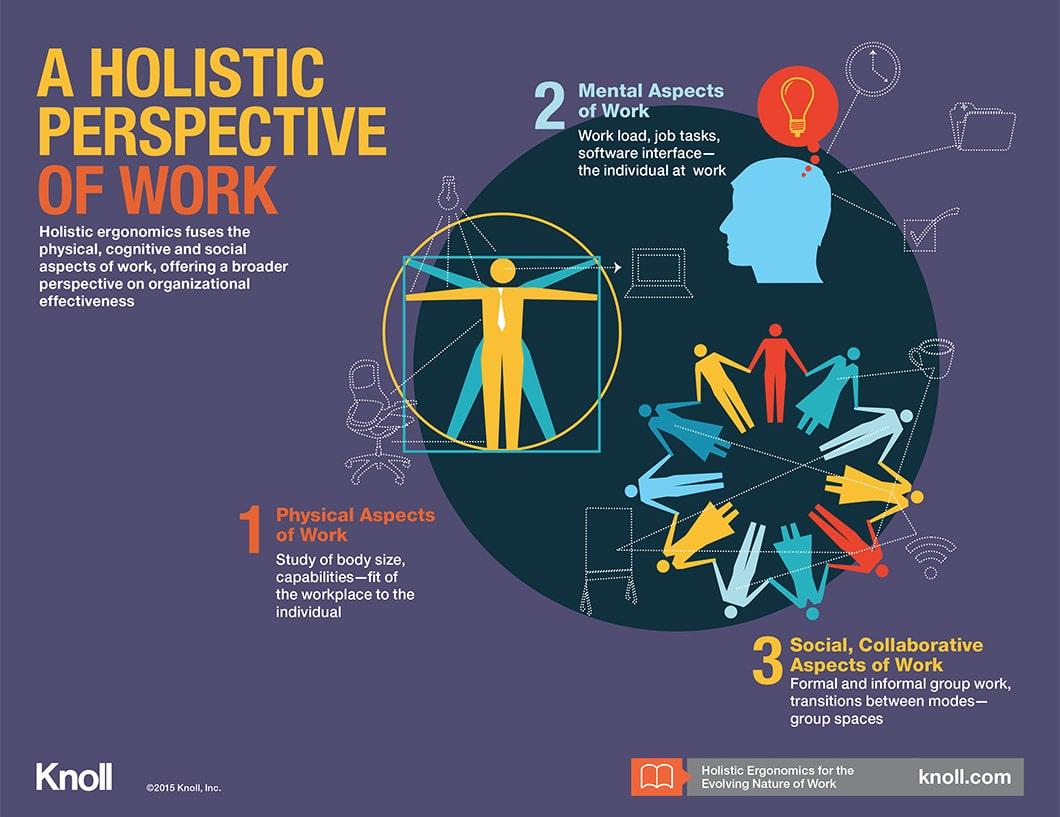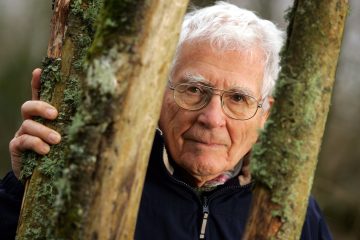Table of Contents
- The Legacy of James Lovelock and Gaia Theory
- Understanding the Role of Gaia in Environmental Science
- Exploring the Impact of Lovelocks Innovations on Climate Change
- Practical Applications of Lovelocks Ideas in Sustainable Living
- Embracing a Holistic View: Recommendations for Future Generations
- Q&A
- Key Takeaways

The Legacy of James Lovelock and Gaia Theory
James Lovelock’s contributions to environmental science transcend the boundaries of traditional ecology, birthing a revolutionary concept known as Gaia Theory. This theory posits that the Earth functions as a self-regulating, complex system where the biotic and abiotic components interact harmoniously to maintain life. Lovelock’s vision challenged the conventional view of nature as merely a backdrop for human activity, advocating instead for a perspective that emphasizes interdependence and balance within the ecosystem. His work invites us to reconsider our relationship with the planet, serving as a clarion call for sustainable practices aimed at preserving this delicate equilibrium.
Throughout his illustrious career, Lovelock highlighted the critical role of microorganisms and climate stability in regulating the Earth’s systems. He introduced the concept of feedback loops, which illustrate how living organisms contribute to the planet’s homeostasis. Some key components of his theory include:
- Biogeochemical cycles: The movement of elements like carbon and nitrogen through different Earth systems helps to sustain life.
- Self-regulation: The Earth’s systems adapt and evolve in response to changes, which maintains conditions favorable for life.
- Interlinked systems: Every component of the biosphere is interconnected; the health of one influences the others.
Lovelock’s legacy also prompted significant discourse on environmental ethics and the responsibilities of humanity toward the planet. As the urgency for climate action grows, the principles set forth in Gaia Theory encourage innovative thinking about ecological interventions. Educational initiatives and research efforts inspired by Lovelock’s work are vital for fostering a planet-conscious mindset in future generations. Below, a brief overview illustrates how different disciplines are integrating Gaia Theory into their methodologies:
| Discipline | Application |
|---|---|
| Ecology | Study of ecosystems as interconnected systems. |
| Climate Science | Modeling feedback loops affecting global warming. |
| Philosophy | Ethical considerations on human impact on nature. |

Understanding the Role of Gaia in Environmental Science
The concept of Gaia, pioneered by James Lovelock, asserts that Earth functions as a self-regulating system, where living organisms interact with their environment to maintain conditions conducive to life. This groundbreaking idea emphasizes the interconnectedness of biological and geological processes. By observing patterns in climate and ecological systems, scientists recognize the vital role that organisms play in influencing Earth’s atmosphere, oceans, and land surfaces. Such an approach urges us to reconsider how we perceive environmental issues, advocating for a holistic view that encompasses all facets of planet Earth.
In environmental science, the Gaia hypothesis challenges traditional mechanistic views by proposing that life not only adapts to its environment but actively shapes it. This leads to significant implications in various fields such as ecology, climatology, and sustainability studies. It encourages researchers to explore the dynamic interactions among species and the impact of human activities on these delicate balances. By understanding these interactions, scientists can develop more effective strategies for conservation and climate mitigation.
Moreover, the Gaia theory invites us to foster a deeper connection with nature and recognize our responsibilities towards the environment. It prompts individuals, communities, and governments to consider ecological well-being as paramount. Key principles that arise from this perspective include:
- Interdependence: Acknowledging how species and ecosystems rely on one another.
- Adaptability: Understanding that environments evolve and influence the organisms within them.
- Sustainability: Advocating for practices that ensure the health of our planet for future generations.
Exploring the Impact of Lovelocks Innovations on Climate Change
James Lovelock’s innovations have sparked pivotal discussions about the interconnectedness of life and the environment. His groundbreaking work, particularly the Gaia hypothesis, has encouraged us to view Earth as a self-regulating system where living organisms interact with their inorganic surroundings. This concept has broadened our understanding of ecosystem dynamics and highlighted the vital roles that every species plays in maintaining Earth’s climate. By emphasizing that human actions significantly affect this delicate balance, Lovelock’s theories advocate for a shift in how we approach environmental policy and sustainability.
Furthermore, Lovelock’s innovative ideas have led to practical advancements in technology aimed at addressing climate change. For example, his invention of the Gaia theory-based early warning systems enables scientists to monitor environmental changes more effectively. These systems rely on real-time data to predict ecological disruptions, helping policymakers implement proactive measures. Additionally, his promotion of sustainable energy solutions, such as geothermal and bioenergy, aligns with his vision of reducing our carbon footprint while fostering ecological resilience.
The societal impact of Lovelock’s work extends beyond science into public consciousness, shaping how we view our responsibilities toward the planet. His frequent warnings about the consequences of inaction resonate deeply, urging communities and governments to prioritize environmental stewardship. Not only has he prompted discussions in scientific circles, but his advocacy has also inspired grassroots movements worldwide, emphasizing the importance of individual and collective action against climate change. By fostering a greater appreciation for our planet and its fragility, Lovelock’s innovations lay the groundwork for a more sustainable future.

Practical Applications of Lovelocks Ideas in Sustainable Living
Implementing Lovelock’s concepts in sustainable living encourages a symbiotic relationship between humanity and the environment. One of the most practical applications is the creation of closed-loop systems. These systems prioritize recycling and upcycling by ensuring that waste materials are reintegrated into production cycles. For instance, composting food waste not only reduces landfill burden but also enhances soil health, promoting biodiversity. This shift towards circular economies embodies Lovelock’s Gaia theory, emphasizing earth’s self-regulating capabilities, thus calling for an awareness of our consumption habits and their ecological impacts.
Another significant application lies in urban planning and green architecture. By integrating green roofs, solar panels, and natural ventilation, we can reduce urban heat islands and lower energy consumption. Community gardens and green spaces within cities not only improve air quality but also foster social interaction and community resilience. Through Lovelock’s lens, these practices highlight the importance of merging natural ecosystems within human habitats, enabling cities to function as part of the Earth’s life-support system rather than separate entities.
Furthermore, renewable energy adoption is another crucial aspect of applying Lovelock’s ideas. Transitioning from fossil fuels to solar, wind, and hydroelectric power significantly diminishes carbon footprints. Innovations in energy storage and smart grid technology can enhance energy efficiency and stability. The table below summarizes various renewable energy sources and their environmental benefits:
| Energy Source | Environmental Benefits |
|---|---|
| Solar Power | Reduces greenhouse gas emissions and energy costs |
| Wind Energy | Minimal land impact; bird population conservation protocols |
| Hydroelectric | Provides clean energy with low emissions, but requires ecosystem management |

Embracing a Holistic View: Recommendations for Future Generations
To create a sustainable future, it is essential to cultivate an understanding of interconnectedness among all living systems. One key recommendation for future generations is to foster an appreciation for nature and its rhythms. Engaging with the environment can promote a sense of stewardship and responsibility. Here are some actionable steps that can help nurture this mindset:
- Incorporate Nature Studies: Implement educational programs that highlight the importance of ecosystems and biodiversity.
- Encourage Outdoor Activities: Promote hands-on experiences through hiking, gardening, or wildlife observation, which can deepen one’s connection with nature.
- Support Conservation Initiatives: Engage in community efforts to protect local habitats and species.
Additionally, it is crucial to integrate sustainability into daily life through conscious consumer choices. Future generations must be equipped with the knowledge to make informed decisions that minimize environmental impact. This can be achieved by:
- Choosing Sustainable Products: Opt for items made from renewable resources and support companies that prioritize environmentally-friendly practices.
- Reducing Waste: Emphasize the importance of recycling and reusing materials to limit resource depletion.
- Advocating for Policy Change: Encourage participation in local advocacy for sustainable legislation and practices.
Lastly, fostering creativity and innovation is essential in addressing the complex challenges posed by environmental degradation. Future generations should be inspired to think critically and develop novel solutions to existing problems. This can involve:
- Participating in STEM Programs: Encourage interest in science, technology, engineering, and mathematics to pave the way for future innovations in sustainability.
- Engaging in Collaborative Projects: Form partnerships across disciplines to tackle real-world environmental issues.
- Utilizing Digital Tools: Leverage technology for awareness campaigns and to drive community engagement.
Q&A
Q&A: Exploring James Lovelock’s PAIS (Planetary Autonomy and Intelligent Systems)Q1: Who is James Lovelock, and what is his significance in environmental science?A1: James Lovelock is a renowned British scientist, environmentalist, and author, best known for developing the Gaia hypothesis, which posits that Earth functions as a self-regulating system. His work has profoundly influenced how we understand the interconnectedness of life and the environment, emphasizing the need for sustainable practices to protect our planet.Q2: What does PAIS stand for, and how does it relate to Lovelock’s overarching theories?A2: PAIS stands for Planetary Autonomy and Intelligent Systems. This concept evolves from Lovelock’s ideas about the interconnectedness of living organisms and their environments, proposing that intelligent systems can help manage Earth’s resources sustainably. It emphasizes the role of advanced technologies and artificial intelligence in enhancing our ability to adapt to and mitigate ecological crises.
Q3: How does James Lovelock’s PAIS concept envision the future of environmental management?A3: Lovelock’s PAIS concept envisions a future where advanced technologies work in harmony with natural systems to create a balanced, resilient ecosystem. By employing intelligent monitoring systems and data analysis, we can better understand our environment, predict changes, and implement proactive measures to preserve biodiversity and mitigate climate change.
Q4: Why is the concept of PAIS considered critical in today’s ecological discussions?A4: PAIS is critical because it addresses the urgent need for innovative solutions to environmental challenges. As climate change accelerates and biodiversity declines, traditional methods of environmental management may prove insufficient. PAIS highlights the integration of technology and nature, suggesting a collaborative approach to restoration and sustainability, making it a key point of reference in contemporary ecological discussions.
Q5: What are some practical applications of the PAIS concept?A5: Practical applications of PAIS include smart agriculture, where data-driven insights optimize resource use while protecting ecosystems; urban planning that incorporates green spaces and biodiversity; and disaster management systems that leverage AI to anticipate and respond to natural disasters. Each of these applications reflects Lovelock’s vision of a harmonious relationship between technology and nature.
Q6: How can individuals contribute to the goals proposed by Lovelock’s PAIS?A6: Individuals can contribute by adopting sustainable practices in their daily lives, such as reducing waste, conserving energy, and supporting local ecosystems. Engaging with technology, like using smart home systems or participating in citizen science projects, encourages a deeper understanding of environmental issues and fosters a proactive community approach to sustainability.
Q7: What is the broader impact of Lovelock’s PAIS theory on public policy and governance?A7: Lovelock’s PAIS theory can influence public policy by advocating for regulations that prioritize ecological sustainability and technology integration. Policymakers can utilize insights from the PAIS framework to develop strategies that not only address immediate environmental concerns but also plan for long-term ecological resilience, encouraging the alignment of economic growth with ethical environmental stewardship.
This Q&A format provides an informative overview of James Lovelock’s PAIS concept while engaging readers with relevant questions and answers about its implications and significance in today’s world.



0 Comments